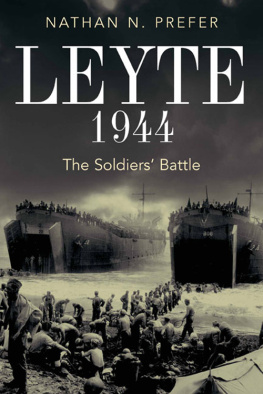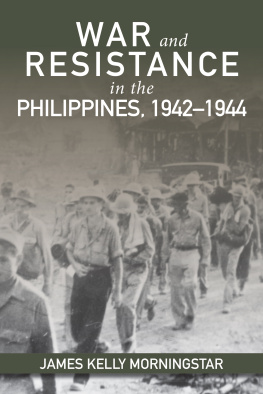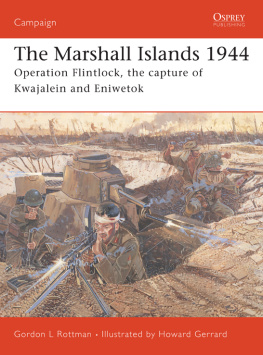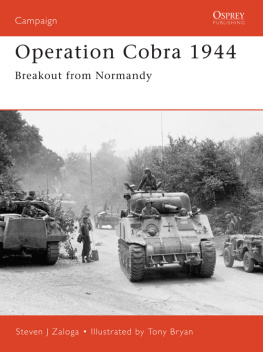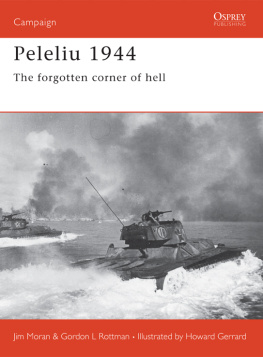
This edition is published by PICKLE PARTNERS PUBLISHINGwww.picklepartnerspublishing.com
To join our mailing list for new titles or for issues with our books picklepublishing@gmail.com
Or on Facebook
Text originally published in 2004 under the same title.
Pickle Partners Publishing 2014, all rights reserved. No part of this publication may be reproduced, stored in a retrieval system or transmitted by any means, electrical, mechanical or otherwise without the written permission of the copyright holder.
Publishers Note
Although in most cases we have retained the Authors original spelling and grammar to authentically reproduce the work of the Author and the original intent of such material, some additional notes and clarifications have been added for the modern readers benefit.
We have also made every effort to include all maps and illustrations of the original edition the limitations of formatting do not allow of including larger maps, we will upload as many of these maps as possible.
OPERATION STALEMATE II
By
Lt Col Daniel C. Hodges
TABLE OF CONTENTS
Contents
TABLE OF CONTENTS
REQUEST FROM THE PUBLISHER
ABSTRACT
Operation Stalemate II was conducted on 15 September 1944 to secure the Palau Islands in the Pacific Ocean. The primary purpose of this operation was to prevent the Japanese from attacking MacArthurs western flank while he conducted operations in the Philippines. After 72 days of fighting US forces eliminated the entire Japanese garrison of 13,500 soldiers. US casualties included over 2,000 dead or missing.
Operation Stalemate II did not achieve its primary purpose of preventing the enemy from attacking MacArthurs flank because that purpose had already been accomplished. The commander of Japanese forces in the Palaus did not have the ability influence actions against the Americans in the Philippines
Prior to 15 September 1944 key leadership realized the intent of Stalemate II had already been achieved. Despite this knowledge Stalemate II was allowed to proceed because military leadership of the Pacific was hampered by an inefficient command structure. The inefficiencies manifested as disputes between personalities and services, competition for resources, and decentralized execution of two distinctly separate courses of action against Japanese forces in the Pacific. This led to duplication of efforts and execution of unnecessary tasks. Stalemate II was one such unnecessary task.
Although unnecessary at the time, Stalemate II significantly contributed to todays Joint command and control concepts. The sacrifices made by those who participated in Stalemate II continue to pay dividends for Americas modern military forces.
ACKNOWLEDGMENTS
I wish to express my sincere gratitude to Mr. Henry Paustian. First of all I commend you for your personal sacrifices and service to our country as a United States Marine during World War II. I am also extremely grateful for your willingness to suffer my lengthy questions about your experiences as a participant in Operation Stalemate II. To Dr. Christopher Gable, Mr. Charles Zaruba, and LTC Timothy McKane, thank you for the professional effort and support you gave me towards completion of this thesis. Finally to Helen Davis, I thank you for the support and patience you gave me in preparation of this work.
CHAPTER 1 INTRODUCTION
The entire island seemed to explode. The screams and curses of men, fearful, excited, or in agony, rose above the ungodly roar of exploding shells, the smack and splatter of bullets and the rattle of amphibian tractors. Men strangled in their own blood, were blown to bits, burned to death in their landing craft, lay white and motionless with small blue holes in their bellies, or screamed and writhed in pain from monstrous, blood-gushing wounds. {1} Henry Paustian, Peleliu
On 15 September 1944 thousands of soldiers faced each other in a bloody struggle for control of the tiny island of Peleliu, which is part of the Palau Islands group of the Western Caroline Islands of the Pacific Ocean. (See Appendixes A-1 and A-2 for a map of the Pacific Ocean and the Palau Islands.) The vaunted 1st Marine Division led the American attacking force. Defending the island was a resolute force of Japanese soldiers, with no hope of reinforcement or escape, under orders to die fighting, killing as many of their enemy as they could. American leadership anticipated a sharp fight lasting no more than three days. What occurred was a three-month contest of human endurance between equally determined foes. At the end of seventy-two days of continuous fighting, the entire Japanese garrison of 13,500 soldiers, less 300 prisoners, {2} had been wiped out. The victors paid dearly for their win; their enemies inflicted nearly 10,000 casualties including over 2,000 dead or missing soldiers, sailors, and Marines. {3} Operation Stalemate II, the American code name for the attack, was over. The US had eliminated another Japanese outpost; however, it was an outpost that the American commander in charge of the operation had recommended be bypassed. {4}
Prior to 15 September 1944 key leadership knew that the intent of Operation Stalemate could be realized without conducting the operation. Despite this knowledge Operation Stalemate II was allowed to proceed because the Joint Chiefs of Staff served as coequals, setting the conditions for a bifurcated Pacific theater strategy dominated by interservice rivalry, service parochialism, and personal competition.
This thesis will address five aspects of Operation Stalemate. This first chapter will look at the battle itself by determining the composition of the opposing forces, their plans for battle, and what happened during the battle. The second chapter will explore the strategic settings and opposing strategic plans for the Pacific Theater at the outset of WWII in the Pacific to the months and days just prior to the landing of Marines on Peleliu. This chapter will ascertain how planners envisioned Operation Stalemate supporting US theater strategy for both of those time periods. The third chapter describes the US leadership support for Operation Stalemate and how that support affected those who participated in the operation. The fourth chapter details the results of the US victory. Specifically addressed is how those results supported US strategic planning. This chapter also focuses on the recommendation to cancel Operation Stalemate. The fifth chapter illustrates the nature of the strategic leadership in the Pacific during World War II. This chapter includes a discussion of an inter-service and personal rivalry and the role of the US Joints Chiefs of Staff of World War II.
US Forces
US forces that participated in Operation Stalemate II were under the command of Fleet Admiral Chester W. Nimitz, also known as Commander in Chief Pacific Operations Area or CINCPOA. Nimitz assigned responsibility for Operation Stalemate to his Western Pacific Task Forces comprised of the Third Fleet commanded by Admiral William F. Halsey. Halsey in turn assigned the conduct of the operation to his Joint Expeditionary Force Task Force 31 that was commanded by Vice Admiral Theodore S. Wilkinson. Wilkinsons command consisted of the Western Attack Force (Task Force 32) commanded by Rear Admiral Fort and the Expeditionary Troops (Task Force 36) commanded by Major General Julian C. Smith (see figure 1).


